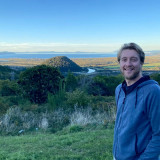Co-producing the ECLIPSE programme with the Caldera Advisory Group, supporting the first Aotearoa NZ alert level rise for a supervolcano
Presentation
Authors: G. Leonard, C. Wilson, F. Illsley-Kemp, S. Barker, B. Scott, N. Fournier, S. Potter, D. Charlton, M.A. Clive, K. Tapuke, B. Smith, D. Johnston, T. Wilson, E. Mestel
Event: Cities on Volcanoes
Summary: This conference presentation demonstrates how media and public responses to the supervolcano alert level rise were well matched to the levels of increased risk, largely attributable to the co-produced science and communication material.
ECLIPSE (Eruption or Catastrophe: Learning to Implement Preparedness for future Supervolcano Eruptions) is a just-completed 6-year large multi-institutional research programme. It involves scientists across Aotearoa New Zealand in co-producing research, resources and plans with local and national emergency managers, mana whenua (Māori land owners) and the GeoNet Volcano Monitoring Group (VMG) through the interagency Caldera Advisory Group (CAG). CAG addresses planning and coordination activities for Te Ahi Tupua (known also as central Taupō Volcanic Zone calderas).
ECLIPSE was fortuitously timed: in 2022 unrest at Taupō resumed. Magma system understanding and earthquake location approaches from ECLIPSE aided the VMG in faster, more confident interpretations of the unrest. As a Volcanic Alert Level (VAL) rise became more likely, scientists from ECLIPSE, GeoNet and other key national programmes, in partnership with national emergency managers and CAG, developed messaging and esources. The VMG raised the VAL to 1 (minor unrest) on 20/9/2022. The team, together with scientists in the wider New Zealand Volcano Science Advisory Panel, also sketched out potential future scenarios, probabilities and possible impacts that were widely communicated to stakeholders, responding agencies and the public.
Programme social scientists demonstrated that the scenarios and communications package were widely valuable, including across central government - notably the Ministry of Finance and the Director of Civil Defence Emergency Management. Media and public responses to the alert level rise were well informed and matched to the levels of increased risk, largely attributable to the broadly co-produced science and communication material.

Graham Leonard
Volcano Geologist

Simon Barker
Geologist

Danielle Charlton
Hazard & Risk Scientist

Nico Fournier
Volcanologist